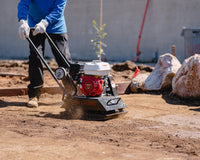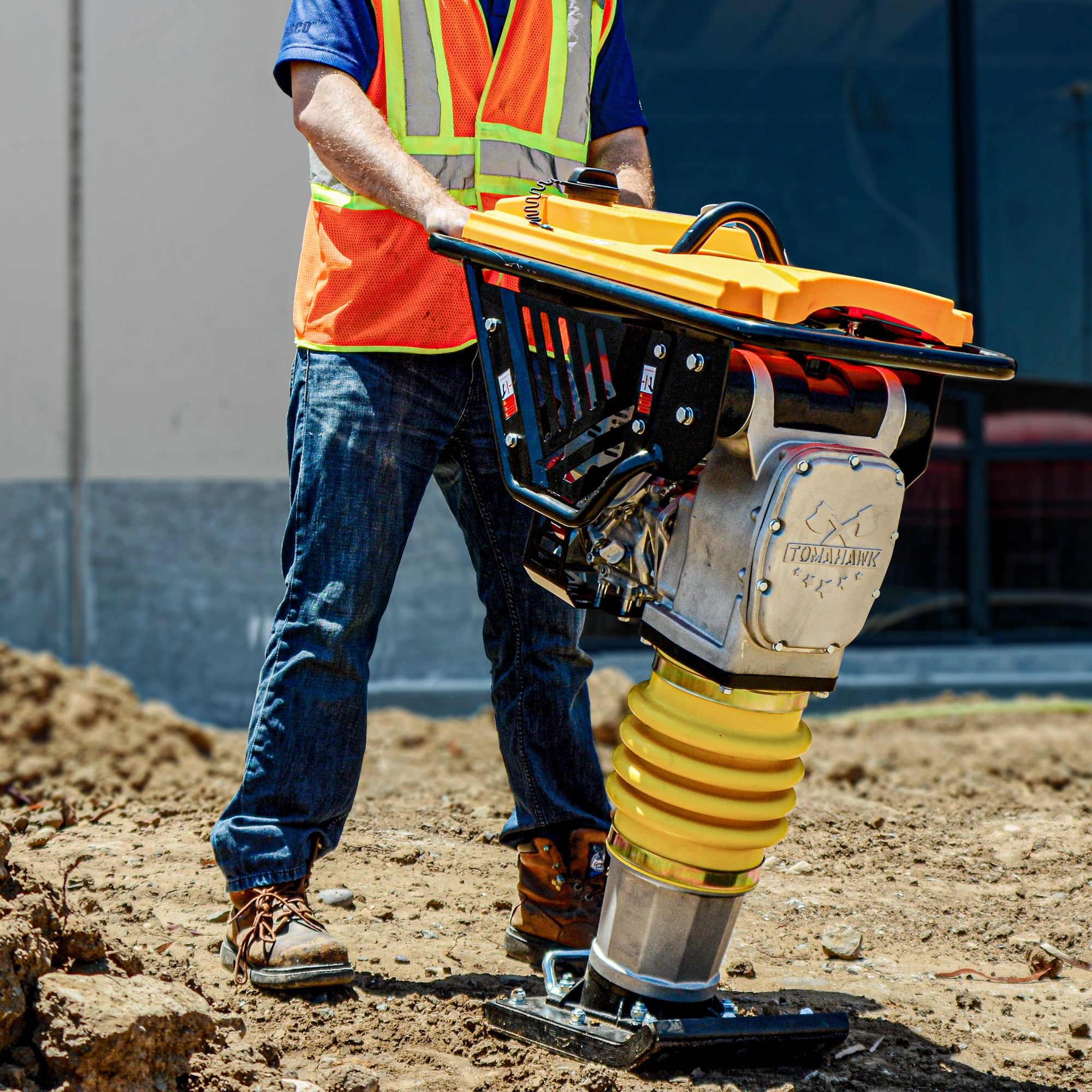Articles
How to Use a Pump to Prepare a Jobsite After Rain
Heavy rain can halt jobsite progress in minutes. Trenches flood, foundations pool with water, and access roads become impassable. To get back on schedule, water removal becomes the first priority—and that's where the right pump makes all the difference.
Comparing Submersible vs. Surface Water Pumps: A Practical Guide for First-Time Buyers
Choosing the right water pump starts with understanding the two main categories: submersible and surface (or above-ground) pumps. Both are used to move water from one place to another, but the way they work—and the environments they’re best suited for—differ significantly.
What Size Pump Do You Need for Residential De-Watering?
When it comes to removing water from your basement, crawlspace, backyard, or sump pit, choosing the right pump size is just as important as having a pump at all. If it’s too small, it may take hours to clear a flooded space—or worse, never catch up. If it’s oversized, it could short-cycle, wear out faster, or cost more than necessary.
How to Maintain Your Water Pump for Maximum Efficiency
Water pumps play a vital role in everything from emergency drainage to irrigation and construction dewatering. When a pump is poorly maintained, it can underperform, overheat, or fail when it’s needed most. Regular upkeep ensures your pump operates at peak efficiency, reduces repair costs, and extends the equipment's service life.
Top 5 Use Cases for Compact Submersible Pumps
Compact submersible pumps have become an essential tool for water management across a wide range of environments—from construction sites to home gardens. Their ability to operate fully submerged makes them effective for water removal in confined or flooded spaces, and their sealed motor design allows for long-term use in harsh conditions.
Smart Pumping: Best Practices for Using Submersible Pumps in Wet Concrete Conditions
Concrete pours don’t wait for perfect conditions—and water intrusion doesn’t either. From rising groundwater to rain accumulation in open forms or excavations, managing water during concrete operations is a critical aspect of jobsite control. Standing water can compromise slab integrity, delay finishing schedules, and violate safety protocols.
Troubleshooting Common Submersible Pump Issues: What to Check Before You Replace
Before jumping into diagnostics, it’s important to understand the basic mechanics of how submersible water pumps work. These devices operate entirely underwater, using a sealed motor to power an impeller that pushes water to the surface. Because the motor is submerged, the risk of overheating is reduced, and water is moved efficiently—without the suction limitations of above-ground alternatives.
Fast Foundation and Basement Dewatering: Why Submersible Pumps Are the Smartest Choice
When water collects around foundations or floods into basements, the consequences can be immediate and costly. Structural integrity is compromised, mold begins to grow, and work grinds to a halt. Whether you’re a contractor facing a flooded jobsite or a homeowner dealing with storm runoff, fast and effective dewatering is critical.
Why Every Jobsite Needs a 1/2HP Submersible Pump
Submersible water pumps are electric devices designed to operate while completely submerged in water. Unlike surface pumps, which create suction to pull water upward, submersible pumps use pressure to push water to the surface. This makes them far more efficient at removing water from deep or flooded areas—an essential feature for jobsite conditions where time and reliability are critical.
How Often Should You Seal Pavers? A Smart Schedule for Lasting Results
If you’ve sealed your patio and love the look, you might be wondering: how long does paver sealant last? Most high-quality sealers last 2 to 3 years, depending on the product type, weather conditions, and how much foot traffic your patio gets. Glossy or film-forming sealers may need reapplication sooner than penetrating or breathable types.
Top Sealing Mistakes to Avoid for a Flawless Paver Patio Finish
Sealing your paver patio is meant to protect and enhance it—but doing it incorrectly can do more harm than good. Whether you're applying a sealer for the first time or reapplying after a few years, knowing what not to do when sealing pavers is essential to avoid haze, peeling, or wasted product.
When Should You Seal Pavers? Timing Tips for the Best Patio Protection
If you’ve recently installed a new paver patio, timing is everything when it comes to sealing. The most common question is: how long to wait to seal after installation? The recommended wait time is 60 to 90 days. This allows the pavers to fully settle, release surface salts (efflorescence), and dry thoroughly.
How to Seal Pavers: A Step-by-Step DIY Guide for Long-Lasting Results
Sealing pavers is one of the most effective ways to protect your outdoor space from stains, weather damage, weed growth, and fading. While not always necessary, it can dramatically extend the life of your patio and enhance its appearance—especially if you want that “wet look” finish.
Should You Seal Your Paver Patio? Pros, Cons, and When It’s Worth It
If you’ve recently completed a hardscape project or are planning one, you may be asking: should I seal my paver patio? The answer depends on your priorities—whether they lean toward aesthetics, maintenance, or long-term protection.
Avoid These Common Mistakes When Laying Pavers for a Long-Lasting Patio
Installing a paver patio is one of the most rewarding outdoor projects—but it’s also one of the easiest to get wrong if you skip key steps. From poor compaction to bad edge restraints, mistakes laying pavers can result in an uneven, unstable, or short-lived patio.
How to Install a Paver Patio on a Slope: Grading, Prep, and Best Practices
Building a patio on flat ground is one thing—but how to lay pavers on a slope requires a different level of planning and precision. Whether you’re building on a gentle incline or working along a steeper hill, proper paver slope prep is critical for drainage, durability, and long-term stability.
What Goes Under Pavers? A Guide to Base Layers and Patio Foundation Materials
A beautiful patio begins with a strong foundation. If you’re new to hardscaping, you may ask: what goes under pavers, and why does it matter? The answer lies in structure, stability, and longevity. Without the right paver base layers, even perfectly placed stones will shift, sink, or crack over time.
Do You Really Need a Compactor for Pavers? How to Build a Solid Base
If you're laying a patio, walkway, or driveway, one of the most common questions is: do I need a compactor for pavers? The short answer is yes. Proper compaction is what separates a patio that lasts decades from one that settles, shifts, or cracks after the first rainy season.
Paver Patio or Concrete? How to Build a Patio with Pavers That Lasts
When planning an outdoor living space, many homeowners ask: paver patio or concrete—which is better? Both have pros and cons. Concrete is often cheaper up front and faster to pour, but it can crack over time and is harder to repair. A paver patio, while slightly more labor-intensive, offers better long-term value through flexibility, durability, and visual appeal.
How to Build a Low-Cost Paver Patio Under $1000 That Lasts
The short answer is yes—with a strategic approach. Whether you're working with a small backyard or modest resources, it is absolutely possible to build patio under $1000 without sacrificing durability. A combination of simple design, locally sourced materials, and some DIY determination can bring your vision to life without draining your wallet.
Paver Patio Cost Breakdown: Materials, Labor, and What to Expect
The 2025 Paver Patio Cost Guide: What You’ll Really Pay and Why
If you’re planning an outdoor upgrade this season, you’re likely wondering: how much does a patio cost in 2025? While prices vary by region, material, and labor availability, the average cost of a paver patio 2025 falls between $12 and $28 per square foot. This includes base preparation, materials, and installation—though larger patios or complex layouts can push the number higher.
How Much Does a Paver Patio Cost? Pricing by Size and Square Foot
One of the most common questions for homeowners planning an outdoor upgrade is: What’s the paver patio cost per sq ft? While pricing can vary widely based on materials, labor, and site conditions, national averages typically fall between $10 and $30 per square foot. This includes base prep, pavers, edge restraints, sand, and compaction—but doesn’t always include extras like drainage correction or sealing.
DIY vs Professional Patio: Which Is Cheaper and What’s the Real Cost?
If you're planning to install a paver patio, one of the first questions is often: is DIY patio cheaper than hiring a pro? The answer is generally yes—at least in terms of direct expenses. Labor accounts for 40%–60% of the total patio cost when using professional installers, so eliminating that alone can drastically reduce your budget.
Smart Ways to Save on Patio Installation Without Sacrificing Durability
You don’t need to overspend to create a beautiful and lasting outdoor space. In fact, with the right budget paver patio tips, it’s possible to achieve a high-end look while keeping your project affordable. The secret is in knowing where to reduce costs—and where not to.
What Really Affects the Cost of a Patio? A Practical Pricing Guide for Homeowners
If you’ve ever wondered why patios are expensive, the answer isn’t just about materials. Labor, site conditions, design complexity, and equipment needs all contribute to rising costs. While patios are often seen as simple outdoor upgrades, they require precise grading, compaction, and multi-layer construction—all of which demand time, tools, and skill.
The Hidden Costs of Paver Patio Installation and How to Avoid Them
When budgeting for a paver patio, most homeowners calculate the basics—pavers, sand, gravel, and maybe a few tools. But many are caught off guard by hidden costs paver patio projects tend to accumulate. These aren’t luxury upgrades—they're standard tasks or conditions that simply weren’t part of the original plan.
DIY Patio vs Hiring a Pro: Cost Comparison and What You Should Know
For many homeowners, the decision between DIY patio vs hiring comes down to cost, confidence, and convenience. While professional contractors offer efficiency and expertise, they also come with significant labor fees. So, is DIY patio cheaper? In most cases, yes—but only if you’re prepared to take on the physical work and manage the details yourself.
Paver Patio Cost Guide: How Much to Install and What Impacts Price per Square Foot
Understanding the true paver patio cost starts with knowing the major components: materials, labor, base preparation, and equipment. If you’re hiring a contractor, the average cost typically ranges from $15 to $30 per square foot, depending on region and complexity. For DIY builders, that number drops considerably—but tools, base material, and time investment must still be considered.
How to Build an Affordable Paver Patio and Save Without Sacrificing Quality
Creating an affordable paver patio doesn’t mean compromising on quality or style. With the right planning and material choices, even budget-conscious homeowners can build a patio that adds real value to their outdoor space.









